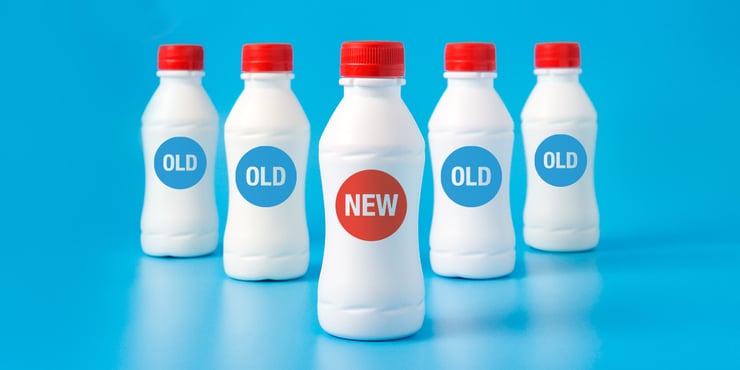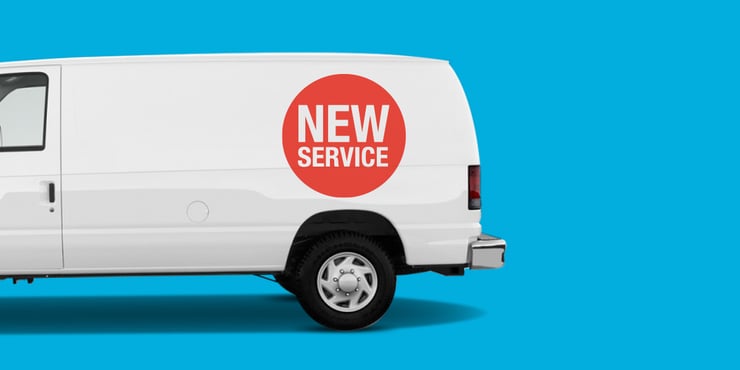Launching a new division, releasing a new product, or refining your company’s image all have one thing in common: business growth.
The new division (or product) is born from opportunity. Whether that opportunity is an underserved market or a disruption to an existing one, you’ll need to tell your story of innovation and change with clarity and currency.
That means keeping your brand fresh and relevant. My experience has been that if you’ve recognized a new market condition, a competitor has as well. So, you’ll need to act on the opportunity before someone else does.

OK, you can see where you want to go. You’ve identified the opportunity and have a team in place that can execute on the product’s development (or service offering.) What’s next?
How do you create a foundation from which to start this growth plan? How do you allocate the best use of your budget to extract the highest returns?
In this blog we’ll discuss the top four issues business leaders face when confronted with taking a product/service offering to market or improving the story of their current brand scenario.
However Big You Grow, Stay True to Your Brand Values
Before we get into the issues and the mechanics of the process, let’s be sure to state that building this “new story” doesn’t mean eroding at the values on which your company has been founded.
Values transcend specific products and services. Values are the compass by which you make decisions both in client interactions and staffing management. They are the cornerstone of your business and reasons your business exists. Your new offering needs to embrace your founding values.
Seeing a market opportunity is a big first step and bringing a team together to execute is when the real work begins. This team consists of internal groups and outside consultants. Each needs to bring something to the table that will positively affect the outcome of the exercise.
4 Key Issues to Address When Launching a New Division or Product

Issue 1: Choosing the right name for your new product/service
Your name can—and should—do a lot of heavy lifting in your advertising and marketing. A good name does more than support your ads—it is an ad, each time it appears. The monetary value of the right name is beyond measure.
The right name is unique, yet appealing. Short enough to be memorable, yet descriptive enough to identify your product or market, and attract the right clients or buyers.
The right name can do many things:
- Differentiate you from your competitors
- Tell the world you are different
- Reinforce your brand position
- Make an emotional connection that ignites passion in your customers
- Be unforgettable
- Gain momentum on its own, becoming a no-cost, self-sustaining PR vehicle
- Inspire images for use in marketing and advertising
- Be the genesis of a brand that rises above the goods and services you provide
- Completely dominate a category
Working with a professional branding consultant or agency is key to choosing the most effective name. Learn more in my blog: What Makes the Corporate Brand Naming Process Successful?
Issue 2: Connecting the new division or product to your current brand ecosystem
Decisions need to be made about the manner in which this new offering is connected to your existing brand. Is it so unique that it needs a completely fresh start and stands alone? Or is essential to lean on your existing structure to ensure success?
A stand-alone division or product line presents a chance to do something new that hasn’t been done within your current brand structure. No baggage is attached. But this choice presents challenges and a required different strategy to launch and create sustaining sales.
The easiest way to launch a new product or division is to connect it to the parent brand. The parent brand is, typically, well established and has equity in the form of a reputation.
Having clarity to this aspect will assist in developing a visual standard for the new entity. That visual standard gets applied to every touchpoint of this new endeavor: packaging, uniforms, vehicle wraps, advertising and signage just to name a few.
Getting this visual standard right builds upon the name and the relevance to the parent brand. Unity and consistency are hallmarks to building a lasting brand.
Learn more in: How to Create a Powerful Brand With Brand Identity Guidelines
Issue 3: Taking the product or service to market

The channels to choose from in which to promote/launch this new endeavor are many – it’s mind boggling actually. What is your entry point and once inside what services do you embrace?
Google Ads, Facebook advertising, Inbound marketing, Programmatic ads… Combining these with traditional promotional tactics can have impressive results. But you need an expert to weigh in on what will work best for your potential clients and culturally for the business.
Whatever route you choose, having a solid online presence is essential. Wherever people initially discover you, they’ll do some research online to see if the offer is real and to read what people are saying (about you) in an effort to determine if what you’re offering is right for them.
In the end, there’s no silver bullet. A well-coordinated promotional program leverages the best of various channels and funnels them into your world.
Issue 4: Committing to and executing on your program
Rome wasn’t built in a day.
Understand what it takes to attract a new client. We call it the cost of client acquisition: (sales costs + marketing costs / the number of new clients you landed in the past year.)
If you are honest with yourself, you’ll discover the costs are significant. You’ll also need to understand a client’s lifetime value - basically how much they spend with you over the long term.
If you want to grow your business by X%, you’ll need to attract X amount of new clients. The math is simple to understand at that point. Together, these two values need to influence your marketing investment.
Recognize what’s at stake and be committed to your program. It takes time for people to discover your offering, and even longer for them to become a client.
If you’re not in it for at least a year, then you’re not in it at all. It’ll be six months before you start to see some traction and another before the sales start to roll in. To get there, believe in your offering and stay true to the plan.
That’s not saying that you can’t improve things on the fly, but this can only happen with data. We consistently use the data available to us to improve our clients’ campaigns. It’s one of the many major benefits of leveraging digital tactics for brand storytelling and promotion.
So use whatever tools you have to evaluate what’s working and what’s not, so you can adjust as the program matures.
Final Thoughts
Bringing something new to the market is always exciting. Understanding these four aspects associated with the launch and promotion will go a long way to ensuring your project is successful well into the future.
Next Step:
If you’re struggling with how to best launch your new division or product, we should talk. Click below to schedule a free strategy session with me, where we’ll:
- Discuss and better understand your challenges
- Go over some key tactics you can consider for success
- Delve into some ideas you can explore, either with us, or on your own
Perry Boeker
Principal & Marketing Strategist A results-driven creative thinker, Perry is a marketing management professional with a proven record of achievement in Strategic Planning, Team Leadership, and New Concepts Development.







